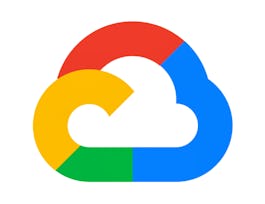This course covers BigQuery fundamentals for professionals who are familiar with SQL-based cloud data warehouses in Redshift and want to begin working in BigQuery. Through interactive lecture content and hands-on labs, you learn how to provision resources, create and share data assets, ingest data, and optimize query performance in BigQuery. Drawing upon your knowledge of Redshift, you also learn about similarities and differences between Redshift and BigQuery to help you get started with data warehouses in BigQuery.



BigQuery Fundamentals for Redshift Professionals

Instructor: Google Cloud Training
Sponsored by Mojatu Foundation
What you'll learn
Describe BigQuery’s architecture, resource provisioning, and data definition model.
Create, secure, and share BigQuery data assets using best practices.
Implement common patterns and best practices for designing schemas, ingesting data, and querying data in BigQuery.
Compare and contrast the differences and commonalities between Redshift and BigQuery.
Skills you'll gain
- Data Store
- Database Architecture and Administration
- Data Management
- Data Architecture
- Big Data
- Query Languages
- Data Engineering
- Cloud Management
- Database Systems
- Cloud Computing
- Multi-Cloud
- Amazon Redshift
- Cloud Infrastructure
- Google Cloud Platform
- Database Management Systems
- Data Storage
- Data Processing
- Databases
- Public Cloud
- Cloud Applications
Details to know

Add to your LinkedIn profile
6 assignments
See how employees at top companies are mastering in-demand skills


Earn a career certificate
Add this credential to your LinkedIn profile, resume, or CV
Share it on social media and in your performance review

There are 6 modules in this course
This introductory module summarizes the key details of BigQuery architecture and resource provisioning including how BigQuery utilizes slots to execute SQL queries and workload management in BigQuery. Drawing upon your knowledge of Redshift, this module also provides a high-level overview of the similarities and differences between Redshift and BigQuery architecture and resource provisioning to help you get started with BigQuery.
What's included
1 video1 reading1 assignment1 app item
This module summarizes the key details of BigQuery’s resource hierarchy and data definition model, including how to create datasets and tables in BigQuery. Drawing upon your knowledge of Redshift, this module also provides a high-level overview of the similarities and differences between the Redshift and BigQuery resource hierarchies and primary data types to help you start working with data in BigQuery.
What's included
1 reading1 assignment
This module summarizes the key details of the Google Cloud Identity and Access Management (IAM) model, including how roles and permissions are applied to datasets and tables in BigQuery. Drawing upon your knowledge of Redshift, this module also provides a high-level overview of the similarities and differences in roles and permissions between Redshift and BigQuery to help you start securing and sharing your data in BigQuery.
What's included
1 reading1 assignment1 app item
This module summarizes the primary options and best practices for ingesting data into BigQuery, including batch data loading, streaming ingestion, and queries to external data sources. Drawing upon your knowledge of Redshift, this module also provides a high-level overview of the similarities and differences in data ingestion options between Redshift and BigQuery to help you start reading and loading your data into BigQuery.
What's included
1 reading1 assignment
This module summarizes common patterns and best practices for designing and optimizing table schemas in BigQuery, including the use of nested and repeated fields, partitioning, and clustering. Drawing upon your knowledge of Redshift, this module also provides a high-level overview of the similarities and differences in schema usage and design between Redshift and BigQuery to help you start structuring and optimizing your data in BigQuery.
What's included
1 reading1 assignment1 app item
This module summarizes the key features and operations of the Google Standard SQL dialect used in BigQuery and best practices for optimizing query performance and controlling costs in BigQuery. Drawing upon your knowledge of Redshift, this module also provides a high-level overview of the similarities and differences in the SQL dialects and features between Redshift and BigQuery to help you start running and optimizing queries in BigQuery.
What's included
1 reading1 assignment1 app item
Instructor

Offered by
Why people choose Coursera for their career




Recommended if you're interested in Information Technology

Open new doors with Coursera Plus
Unlimited access to 10,000+ world-class courses, hands-on projects, and job-ready certificate programs - all included in your subscription
Advance your career with an online degree
Earn a degree from world-class universities - 100% online
Join over 3,400 global companies that choose Coursera for Business
Upskill your employees to excel in the digital economy






